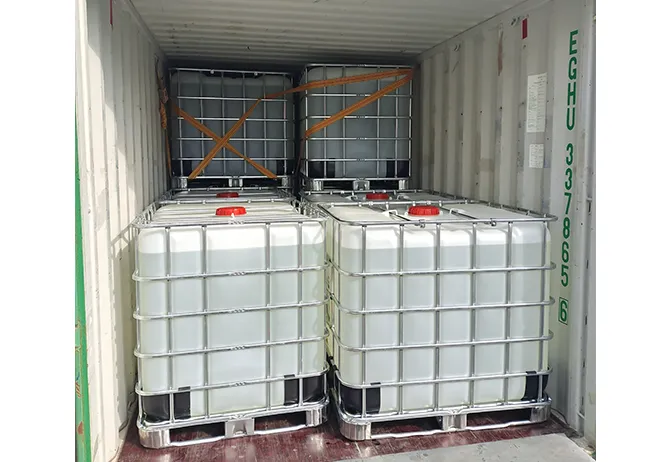
e102 food additive
Understanding E102 Food Additive A Comprehensive Overview
E102, commonly known as Tartrazine, is a synthetic lemon-yellow azo dye used extensively as a food additive. This vibrant colorant is found in a variety of food products, beverages, and cosmetic items, playing a significant role in enhancing the visual appeal of food. As consumers become increasingly aware of food ingredients, the implications of using additives like E102 are crucial to understanding their safety, efficacy, and environmental impact.
Sources and Applications of E102
Tartrazine is primarily derived from petroleum and is synthesized through a series of chemical processes. It is often used in food items such as candies, soft drinks, bakery goods, and even processed foods. Its bright yellow hue is not only appealing but also serves a functional purpose in product differentiation and brand recognition. Beyond food, E102 is also utilized in pharmaceuticals and cosmetics, making it a multifaceted additive.
E102 is often combined with other colorants to achieve a range of shades, making it a popular choice among food manufacturers. Its ability to withstand heat and light makes it ideal for use in processed foods that undergo various cooking processes. However, its widespread application raises questions about potential health concerns associated with its consumption.
Health Concerns and Regulation
The use of E102 has been a subject of debate, particularly in relation to allergic reactions and hypersensitivity. Studies have indicated that a small percentage of the population may exhibit allergic reactions to Tartrazine, which can involve symptoms such as hives, asthma, and even anaphylaxis in severe cases. As a result, consumers with known sensitivities to this additive are often advised to avoid products containing E102.
In response to health concerns, regulatory bodies such as the European Food Safety Authority (EFSA) and the U.S. Food and Drug Administration (FDA) closely monitor the use of food additives, including E102. In Europe, E102 is permitted but must be labeled clearly on packaging to inform consumers. The certification process ensures that the levels of E102 in food products remain within safe limits, minimizing the risk of adverse effects.
e102 food additive

Notably, in some countries, public sentiment has swayed towards natural food colorants, prompting manufacturers to seek alternatives to synthetic dyes like E102. The growing trend of clean labeling and transparency further drives this shift, as consumers increasingly prefer products free from artificial additives.
Cultural Perspectives
Cultural attitudes towards food additives vary globally. In some countries, the use of synthetic food colorants is widely accepted, while in others, there is a marked preference for natural ingredients. In places such as the United States and parts of Europe, discussions around E102 and similar additives are often fueled by movements advocating for organic and natural foods.
Educational campaigns are essential for promoting awareness about food additives and their potential effects on health. By providing consumers with knowledge about E102 and its sources, manufacturers can foster informed decision-making, enabling individuals to choose products that align with their health beliefs and dietary preferences.
Conclusion
E102, or Tartrazine, exemplifies the complex interplay between food science, consumer expectations, and regulatory measures. While it serves vital roles in food production, enhancing aesthetic appeal, and product differentiation, it also raises legitimate concerns regarding health implications and consumer preferences.
As the landscape of food additives continues to evolve, a balanced approach involving thorough research, transparent labeling, and consumer education remains critical. Understanding the role of E102 helps consumers navigate their dietary choices, ensuring they can make informed decisions while enjoying the vibrant colors of their favorite foods. As we move towards a future where natural ingredients may take precedence, ongoing discussions about the role of additives like E102 will remain significant within the food industry and among health-conscious consumers.
-
Pure Sodium Dichloroisocyanurate Dihydrate | Powerful DisinfectantNewsAug.29,2025
-
Industrial Chemicals: Quality & Purity for Every IndustryNewsAug.28,2025
-
Nitrile Rubber Honoring Strict Production StandardsNewsAug.22,2025
-
Aspartame Ingredients Honoring Food Safety ValuesNewsAug.22,2025
-
Fertilizer for Balanced Plant NutritionNewsAug.22,2025
-
Cyanide Gold Processing with High Purity AdditivesNewsAug.22,2025
-
Formic Acid in Textile Dyeing ApplicationsNewsAug.22,2025
Hebei Tenger Chemical Technology Co., Ltd. focuses on the chemical industry and is committed to the export service of chemical raw materials.
-

view more DiethanolisopropanolamineIn the ever-growing field of chemical solutions, diethanolisopropanolamine (DEIPA) stands out as a versatile and important compound. Due to its unique chemical structure and properties, DEIPA is of interest to various industries including construction, personal care, and agriculture. -

view more TriisopropanolamineTriisopropanolamine (TIPA) alkanol amine substance, is a kind of alcohol amine compound with amino and alcohol hydroxyl, and because of its molecules contains both amino and hydroxyl. -

view more Tetramethyl Thiuram DisulfideTetramethyl thiuram disulfide, also known as TMTD, is a white to light-yellow powder with a distinct sulfur-like odor. It is soluble in organic solvents such as benzene, acetone, and ethyl acetate, making it highly versatile for use in different formulations. TMTD is known for its excellent vulcanization acceleration properties, which makes it a key ingredient in the production of rubber products. Additionally, it acts as an effective fungicide and bactericide, making it valuable in agricultural applications. Its high purity and stability ensure consistent performance, making it a preferred choice for manufacturers across various industries.





